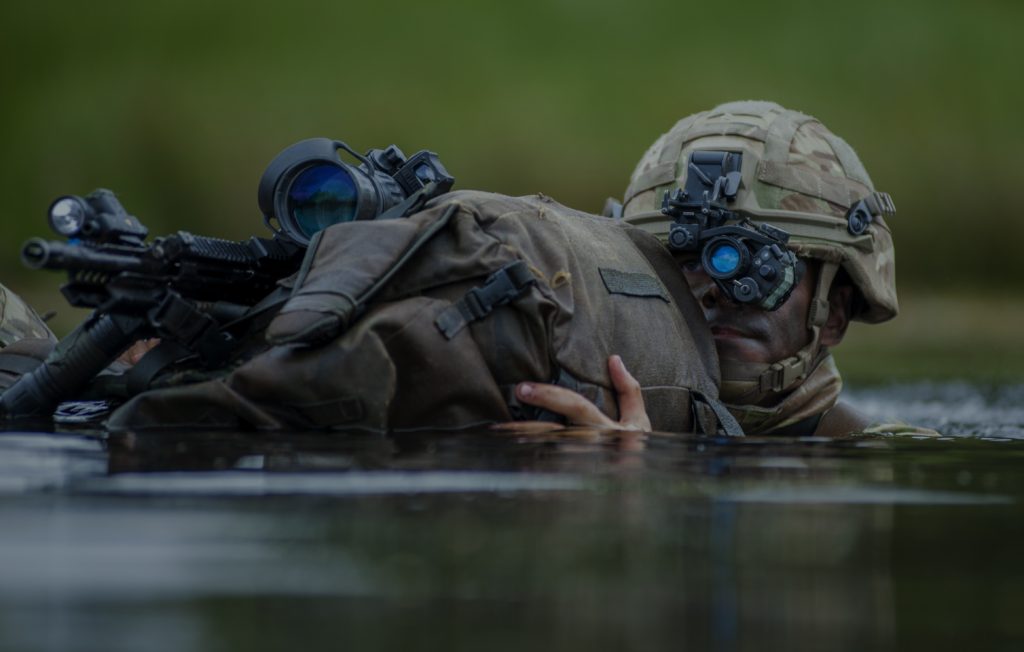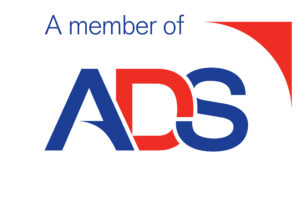Barry ET Harris MBE is a consultant for Proelium Law LLP, he is a British Army veteran, he combines operational experience with extensive commercial consulting, executive, and management expertise gained in complex environments and high-risk jurisdictions worldwide.
The definition of Long Range EO Surveillance varies considerably depending on the particular application. The purpose of this document is to define what is meant by EO surveillance and then to determine different degrees of Long Range EO surveillance arbitrarily. The text then discusses the various techniques and technologies available to meet the requirement.
PURPOSE OF SURVEILLANCE SYSTEMS
INTRODUCTION
The purpose of a surveillance system is to enable an observer to acquire information about objects and activity (targets) beyond their immediate environment. In everyday life, the primary method of achieving this is vision, because the imaging process readily conveys the most detailed information both about the position and appearance of the objects around us, giving us the ability to locate relatively distant objects and recognise them.
A wide range of optic and electro-optic devices now enable us to extend the performance of the eye to allow us to “see” things that would otherwise be impossible. This may be achieved by simply enlarging the image or by increasing the brightness of a low light image or enabling us to use parts of the electromagnetic spectrum other than the visible region to acquire image information.
Almost all scenes are lit to some extent by natural or artificial light sources (or a combination of both), and most objects in any view will be visible not because they are emitting light, but because they reflect ambient illumination to a greater or lesser extent.
Natural lighting conditions fall into a variety of categories depending on the source (and position) of the illumination, and on the weather. Our eyes are adapted well to sunlight, and to lesser extent moonlight and starlight due to the spectral response of the eye. Equally, this applies to the correct selection of sensor. Given the variability of sources of ambient illumination, it is clear that we need to acquire image information under a wide range of conditions.
RANGE OF SURVEILLANCE SYSTEMS
There are four factors that govern the effective range of EO Surveillance systems:
TERRAIN SCREENING
Most surveillance devices require line of sight to the target. Natural and artificial obstacles, such as hills and villages will shield a target from observation. In certain types of terrain, for example, the desert, the effect of terrain screening may not be significant but in a typical European environment, it is a significant constraint on acquisition ranges. The observer or surveillance device on high ground can obtain an extended line of sight, but dead-ground will become a problem and hence many areas of tactical significance will remain hidden.
Typical European intervisibility in the most favourable atmospheric conditions are as follows:
- There is less than a 10% chance that line of sight will exceed 3 kilometres.
- There is less than 5% chance that the line of sight will exceed 5 kilometres.
- There is therefore little justification for a ground-based surveillance device that requires line of sight to a range greater than 5 kilometres.
METEOROLOGICAL CONDITIONS
The performance of a surveillance device may be degraded by poor light and by atmospheric interference, as follows:
- Operation in poor light: visual surveillance is particularly ineffective in darkness. Simple optical instruments, such as weapons sights, and binoculars, provide some enhancement when the conditions are right such as in moonlight, but their performance in these circumstances does not compare with their capability in daylight and acquisition ranges are reduced by a factor of about 10. The level of light also governs the performance of passive devices, which make use of night sky radiation.
- Operation in adverse meteorological conditions: the performance of all surveillance devices is effected to some extent by adverse meteorological conditions. Fog, battlefield smoke, and rain scatter and absorb the radiation from the target and degrade or obscure the contrast, which the target creates. The performance of surveillance systems is also affected by heat haze and shimmer which can reduce the effective range over which the systems operate. The susceptibility of a surveillance system to atmospheric interference is governed by the wavelength at which the system operates. The longer the wavelength, the less the system tends to be affected. Although the overall effect is not serious atmospheric interference can be severe in specific areas, for example over the low-lying ground and at certain times, particularly in winter. Radar, which operates at wavelengths very much longer than visible light, is much less sensitive to atmospheric conditions.
TARGET CHARACTERISTICS
The range at which a target is acquired is governed by the contrast between the target and its surroundings, and by the physical characteristics of the target for the following reasons:
- Contrast. Initially, the presence of a target is disclosed by the contrast between its features and those of its surroundings. The higher this contrast, the more easily the target is acquired. In consequence, a target that presents a high contrast can be seen at a more extended range than one that blends well with its surroundings. The contrast must be evident at the wavelength at which the EO surveillance device is operating. For example, a target that is conspicuous when viewed by a thermal system may be well concealed by camouflage from visual observation.
- Physical Characteristics. In general, terms, the higher the level of energy emitted or reflected by the target, the greater the range at which it can be seen. Thus, the size of the target and its ability to reflect or radiate energy are significant factors in determining the acquisition range.
SYSTEM PERFORMANCE
Finally, the range performance of a surveillance system is primarily determined by the resolution capability of the sensor, which varies according to its type. If high resolution is required, this will impact on the ranges achievable. If long ranges are needed, then the resolution is poorer, unless some means is used to remote the EO sensor to the area of the target and transmit back to the observer.
RANGE CLASSIFICATION
For the purpose of the document EO surveillance ranges are defined as follows:
- Short up to 500m;
- Intermediate up to 1000m;
- Long up to 3000m;
- Very Long beyond 3000m.
SYSTEM REQUIREMENT
The primary requirements of surveillance systems are as follows:
ALL WEATHER CAPABILITY
It is desirable that they have as good an all-weather, day and night, capability as possible.
PASSIVE
It is desirable that they should be passive and essential that they should have a low probability of intercept.
TIMELY INFORMATION
At ranges, out to 6 kilometres, time for reaction and engagement is short. Real-time information is therefore required from EO sensors.
RANGE
The range of operation of the system and the operational performance are crucial to defining the type of surveillance system to be provided.
COVERAGE
EO systems with relatively wide fields of view or ability to cover the area of interest quickly are needed for surveillance. Narrower fields of view are acceptable for target acquisition provided that there is an associated EO surveillance system to cue them.
GENERAL CHARACTERISTICS
Weight, bulk, manpower, training, logistics, reliability, and cost considerations must, of course, be acceptable.
SYSTEM PERFORMANCE
GENERAL
The first step in specifying the performance of a surveillance system is to determine the user requirement and the criteria and level to which the target is to be discriminated.
Discrimination is defined as the ability to detect, recognise or identify a target. There are two criteria generally applied to discrimination, the UK Home Office criteria and the Johnson Criteria. The UK Home Office criteria are usually applied to short to intermediate Long-Range EO Surveillance systems while the Johnston criteria is applied to the longer-range surveillance systems demanded by the defence industry.
UK Home Office Discrimination Criteria:
In an effort to quantify the performance requirement of Surveillance Systems the British Home Office Ministry has produced the following guidelines for CCTV surveillance:
- Identification of a person unknown to the observer requires the image of the subject to occupy 125% of the display screen height. This is equivalent to a head and shoulders view.
- Identification of a person known to the observer requires the image of the subject to occupy 100% of the display screen height.
- Recognition of type of target,g. male, female, solder or policeman requires the image of the subject to occupy 50% of the display screen height.
- Detection of human activity requires the image of the subject to occupy 10% of the display screen height.
- Observation of crowds requires that the body of a person should occupy 5% of display screen height.
- Reading a car licence plate reliably requires that the overall height of the vehicle should occupy 50% of the display screen height.
The above are representative figures and the final usefulness and quality of any image will depend on a series of factors both physical and electronic. Physical factors include scene illumination, colour contrast, air pollution, camera mounting height, lens quality, cleanliness of camera faceplate, and ergonomics of display console and general system maintenance. Electronic factors include specification and suitability of the camera, the specification of any signal transmission paths, specification of video switch, specification of monitors and quality of system design.
Johnson Discrimination Criteria:
Johnson arbitrarily divided visual discrimination into four categories: detection, orientation, recognition and identification. This system became the foundation of EO system discrimination methodology. The minimum resolution according to Johnson’s Criteria are:
- Detection – an object is present: 2 +1/-0.5 pixels
- Orientation – symmetrical, asymmetric, horizontal or vertical: 2.8 +0.8/-0.4 pixels
- Recognition – the type object can be discerned, a person vs a car: 8 +1.6/-0.4 pixels
- Identification – a specific object can be discerned, a woman vs a man, the specific car: 12.8 +3.2/-2.8 pixels
These measurements give a 50% probability of an observer discriminating an object to the specified level.
The Targeting Task Performance (TTP) metric is a more robust system of measuring sensor performance and is now more widely used than the Johnson criteria.
The TTP metric considers each element of a system. The intent of the TTP metric is to describe the ease of doing a Detection, Recognition, or Identification task; it is the current standard used to predict. EO/IR Target Acquisition performance.
TTP was developed by the U. S. Army and is now fully adopted as the image quality metric for formal analyses of EO performance.
Need advice?
If you’d like further information, or to discuss working with us, please get in touch







